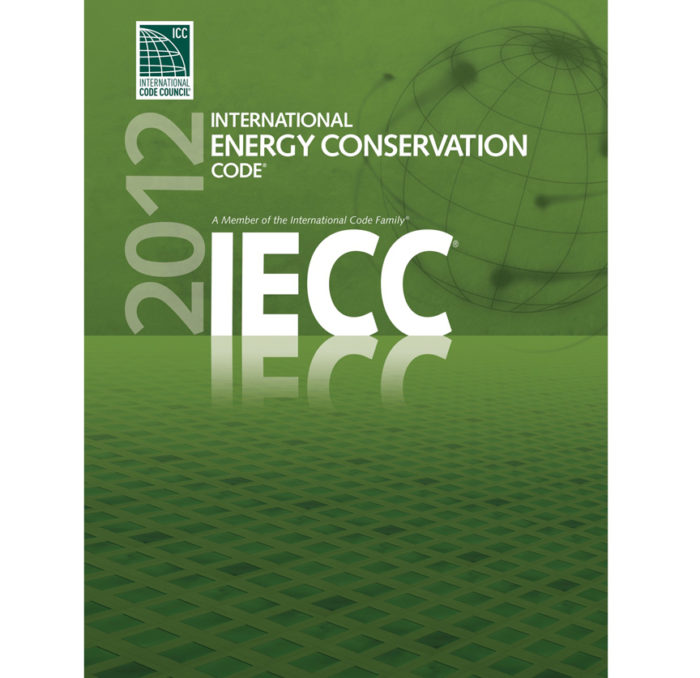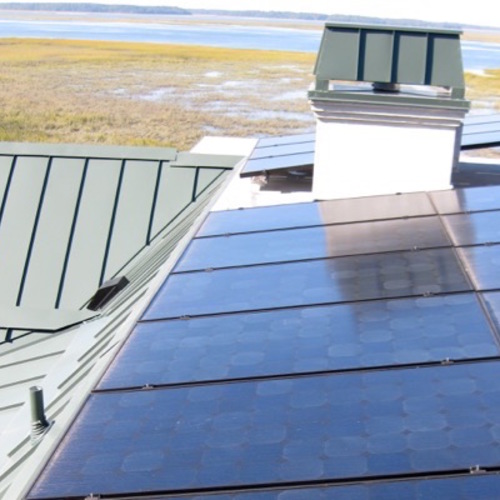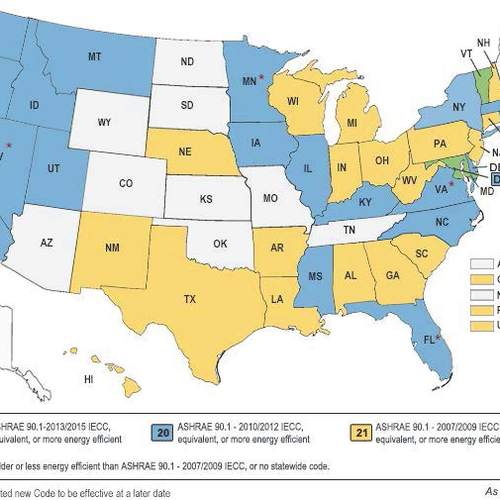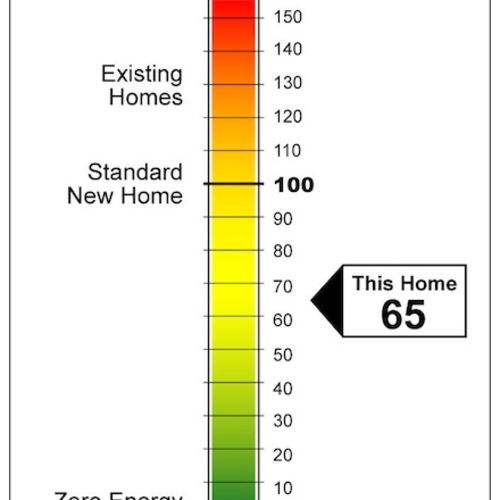
Image Credit: International Code Council
The 2015 version of the International Energy Conservation Code (IECC) will include a new performance path to compliance that is both easier for consumers to understand and also somewhat more stringent than the current version of the code.
Meeting at the International Code Council’s annual conference and public comment hearings, code officials approved an updated code that will be published in 2014. Like other model building codes, this one would take effect only when states or local jurisdictions choose to adopt it.
One of the most significant changes, according to the Institute for Market Transformation, is the addition of the HERS Index as a means of complying with the code.
Ryan Meres, senior code compliance specialist at IMT, said the 2012 IECC includes a performance path, but not one that uses an energy rating index such as HERS.
“It’s just simply based on energy cost,” Meres said of the existing code. “You do an energy model to determine that the home that you’re proposing to build uses less energy than the home that’s just built to the minimum code requirements.”
Under the new code, a HERS Index of between 51 and 58, depending on the climate zone where the house is being built, would signal compliance, Meres said.
The lower the number, the more energy efficient the house. If current code requirements were translated into a HERS Index, it would probably be between 60 and 65, Meres said, so the updated code tightens requirements at the same time as making them clearer to homeowners.
“It’s really the same software, but the energy rating index is more understandable from a consumer perspective,” Meres said. “You know, 100 is a home built to the 2006 energy code and a 0 is a home that uses zero net energy.”
More guidance for renovations, solar installations
There were two other changes that Meres said were important:
- A new section that applies to existing buildings, which should give remodelers a more precise idea of what they have to do in order to make projects code compliant.
- An appendix that spells out how to make a house “solar ready.” Meres said the relatively simple provisions would require a chase that goes to the roof for solar service lines, and a prohibition of anything on the roof that would block the installation of solar panels.
Jeremy Sigmon, director of technical policy for the U.S. Green Building Council, praised the changes and said, “code officials once again made great strides for minimum energy efficiency.” Sigmon said in a prepared statement that while not every proposal promoted by the Energy Efficient Codes Coalition was approved, “generally the outcomes were very positive.”
Adoption not likely to be speedy
Judging by the rate at which the 2012 IECC has been adopted, it may be a while before home buyers in most states will benefit from the tighter energy requirements.
Meres said that between 10 and 15 states, plus some local jurisdictions, have adopted the current version of the code, and that it will be early to mid 2014 before the 2015 code is even published.
Maryland is the only state in the country with an automatic adoption provision, he said, which requires the state and then local jurisdictions to adopt new versions of the IECC it. In other areas, code requirements don’t take effect until lawmakers decide to adopt them.
Weekly Newsletter
Get building science and energy efficiency advice, plus special offers, in your inbox.















One Comment
Loose HERS numbers
I've noticed that there is a tendency to throw around HERS numbers that are supposed to be equivalent to a given energy code without a lot of validation. My experience is that you could build a house in Massachusetts that complies with the IECC 2012 that has a HERS rating of 75, which is much different than the 60-65 mentioned in the article. Codes are starting to name HERS ratings that can be used as a compliance pathway but the numbers being chosen are very low to ensure that even if the home has high efficiency heating, water heating, lighting, and appliances that it will still have to meet the envelope requirements to hit that HERS index.
Log in or create an account to post a comment.
Sign up Log in